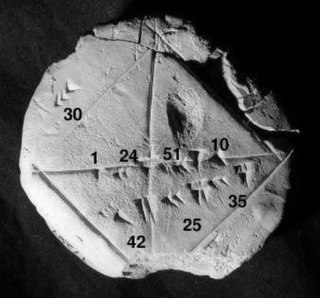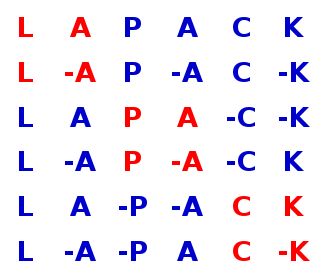
Numerical analysis is the study of algorithms that use numerical approximation for the problems of mathematical analysis. Numerical analysis finds application in all fields of engineering and the physical sciences, and in the 21st century also the life and social sciences, medicine, business and even the arts. Current growth in computing power has enabled the use of more complex numerical analysis, providing detailed and realistic mathematical models in science and engineering. Examples of numerical analysis include: ordinary differential equations as found in celestial mechanics, numerical linear algebra in data analysis, and stochastic differential equations and Markov chains for simulating living cells in medicine and biology.

LAPACK is a standard software library for numerical linear algebra. It provides routines for solving systems of linear equations and linear least squares, eigenvalue problems, and singular value decomposition. It also includes routines to implement the associated matrix factorizations such as LU, QR, Cholesky and Schur decomposition. LAPACK was originally written in FORTRAN 77, but moved to Fortran 90 in version 3.2 (2008). The routines handle both real and complex matrices in both single and double precision.
Computational science, also known as scientific computing or scientific computation (SC), is a field in mathematics that uses advanced computing capabilities to understand and solve complex problems. It is an area of science that spans many disciplines, but at its core, it involves the development of models and simulations to understand natural systems.
The NAG Numerical Library is a software product developed and sold by The Numerical Algorithms Group. It is a software library of numerical analysis routines, containing more than 1,900 mathematical and statistical algorithms. Areas covered by the library include linear algebra, optimization, quadrature, the solution of ordinary and partial differential equations, regression analysis, and time series analysis.
The Galahad library is a thread-safe library of packages for the solution of mathematical optimization problems. The areas covered by the library are unconstrained and bound-constrained optimization, quadratic programming, nonlinear programming, systems of nonlinear equations and inequalities, and non-linear least squares problems. The library is mostly written in the Fortran 90 programming language.
MINPACK is a library of FORTRAN subroutines for the solving of systems of nonlinear equations, or the least-squares minimization of the residual of a set of linear or nonlinear equations.
Numerical linear algebra, sometimes called applied linear algebra, is the study of how matrix operations can be used to create computer algorithms which efficiently and accurately provide approximate answers to questions in continuous mathematics. It is a subfield of numerical analysis, and a type of linear algebra. Computers use floating-point arithmetic and cannot exactly represent irrational data, so when a computer algorithm is applied to a matrix of data, it can sometimes increase the difference between a number stored in the computer and the true number that it is an approximation of. Numerical linear algebra uses properties of vectors and matrices to develop computer algorithms that minimize the error introduced by the computer, and is also concerned with ensuring that the algorithm is as efficient as possible.

Leslie Fox was a British mathematician noted for his contribution to numerical analysis.
The J. H. Wilkinson Prize for Numerical Software is awarded every four years to honor outstanding contributions in the field of numerical software. The award is named to commemorate the outstanding contributions of James H. Wilkinson in the same field.

Lis is a scalable parallel software library for solving discretized linear equations and eigenvalue problems that mainly arise in the numerical solution of partial differential equations by using iterative methods. Although it is designed for parallel computers, the library can be used without being conscious of parallel processing.
The Sidney Fernbach Award established in 1992 by the IEEE Computer Society, in memory of Sidney Fernbach, one of the pioneers in the development and application of high performance computers for the solution of large computational problems as the Division Chief for the Computation Division at Lawrence Livermore Laboratory from the late 1950s through the 1970s. A certificate and $2,000 are awarded for outstanding contributions in the application of high performance computers using innovative approaches. The nomination deadline is 1 July each year.
Artelys Knitro is a commercial software package for solving large scale nonlinear mathematical optimization problems.

Joan Eileen Walsh (1932–2017) was a British mathematician, a professor of numerical analysis at the University of Manchester, and the founding chair of the Numerical Algorithms Group. She was the first female professor of mathematics in the UK.
Validated numerics, or rigorous computation, verified computation, reliable computation, numerical verification is numerics including mathematically strict error evaluation, and it is one field of numerical analysis. For computation, interval arithmetic is used, and all results are represented by intervals. Validated numerics were used by Warwick Tucker in order to solve the 14th of Smale's problems, and today it is recognized as a powerful tool for the study of dynamical systems.
INTLAB is an interval arithmetic library using MATLAB and GNU Octave, available in Windows and Linux, macOS. It was developed by S.M. Rump from Hamburg University of Technology. INTLAB was used to develop other MATLAB-based libraries such as VERSOFT and INTSOLVER, and it was used to solve some problems in the Hundred-dollar, Hundred-digit Challenge problems.




